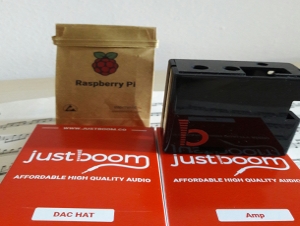March 25, 2017, 1:31 p.m.
Building a Hi-Fi system
By Maurice Ticas

Hardware and software are put together to build something of practical use. Building a system with hardware and software is an engineering effort worthy of pride. In recent times--with the proliferation of Apple, Google, and Microsoft products--we are encouraged to forget about doing such engineering work for sake of convenience. The big companies have taken all the fun and pride from building systems. Why cook at all when you can go out to eat for every meal when hungry? The same question as it relates to hardware and software can be asked: Why build a system when you can just always look outside of your creative powers to obtain it.
This post will describe the Do-It-Yourself project of building a hi fidelity audio system. We will make note of the hardware and software used to build it. If not an audiophile already, this engineering project will perhaps turn you into one.
Let's start. First, we obtain the hardware. We choose to build the system with the Raspberry Pi, a single board computer. We attach two pieces of audio hardware on top of the Raspberry Pi--a Digital Analog Converter, and an AMP. We use the JustBoom DAC and standalone AMP HATs. At this point we will copy an image of an operating system onto a 32 GB SD card, then partition the SD card to have one with the bootable OS, and another with all the remaining memory space. For our OS we will choose Volumio. After this is done, we place the SD card into the Raspberry Pi before encasing it all in a JustBoom case for style.
All that is left to do now is connect a monitor and keyboard to the Raspberry Pi and set up the Volumio OS. When setup is complete, we then must choose both our speakers--active or passive--and our headphones hardware for our system.


There are 0 comments. No more comments are allowed.